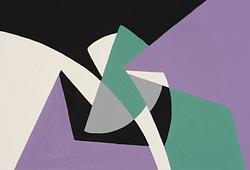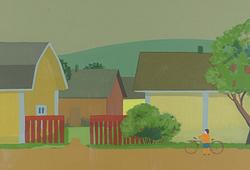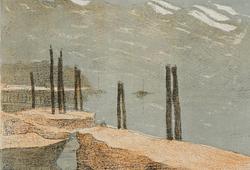Ivan Ivarson
"Slottsplatsen i Cagnes"
Signed I. Ivarson. Executed 1927-1932. Canvas 85 x 95 cm
Provenance
The collection of dentist Bertil Claesson, Sundbyberg.
Exhibitions
Färg och Form, Stockholm, "Ivan Ivarson", October 1936, cat. no 25.
Färg och Form, Stockholm, Jubileumsutställning, 1942.
Sundbybergs Allmänna Konstförening, "Konst ur Sundbybergshem" 20-27 May, 1951.
Literature
Arne Stubelius, "Ivan Ivarson", 1954, illustrated in black and white p. 29.
"Konst i svenska hem", vol. I, listed p. 279, included under collection no. 451 Dentist Bertil Claesson, Landsvägen 58, Sundbyberg.
More information
In early March 1927, Ivarson traveled to Italy (Rome, Florence, Fiesole) and later to Cagnes and the French Riviera. During this period, he reached his coloristic peak—deep ultramarine blues dominated his palette, accented by red, green, and yellow. His recurring motifs—sky, sea, earth, woman, and child—symbolized an ideal world, a dream of nature’s joyful abundance.
Art historian Stubelius described Ivarson’s time in Cagnes as a period of great artistic development, producing luminous small canvases depicting hillside towns, gardens, washerwomen by clear streams, and sunny cafés surrounded by mimosa and eucalyptus trees, with the Alps or the Mediterranean in the distance. Immersed in this fragrant landscape, Ivarson painted passionately, swam daily in the blue sea, and recovered his health and vitality.
When he returned to Sweden in 1929, the quiet of Stenungsön in Bohuslän allowed him to absorb the impressions from abroad and refine the vivid, expressive color language that became uniquely his own.
His works are not direct depictions but emotional responses to nature—vibrant, expressive, and full of life. The painting in this auction is a fine example of his southern European period.



















































